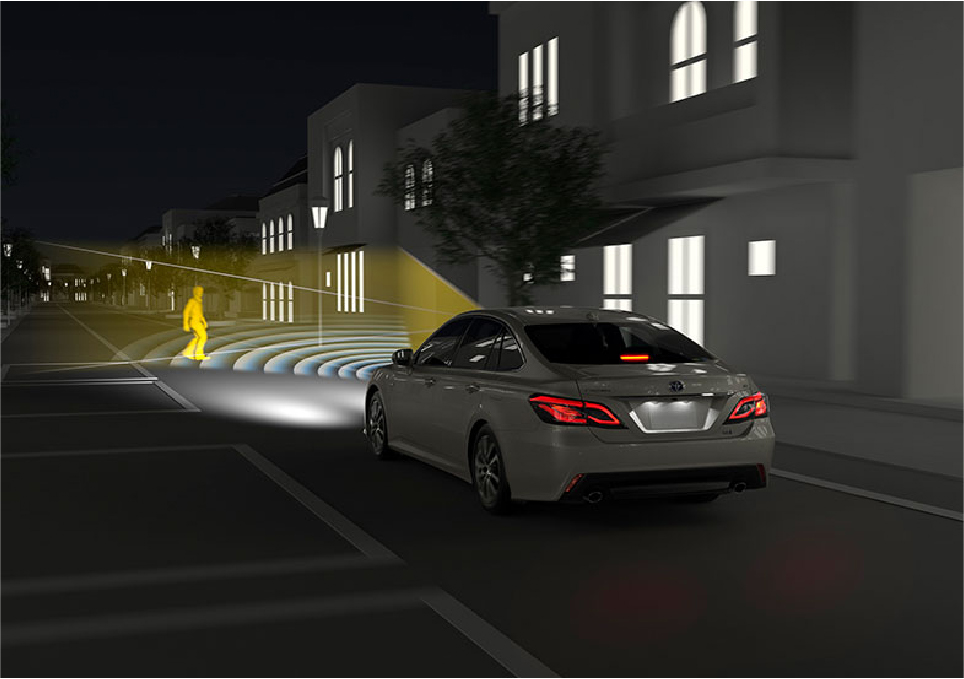The Problem
Bicycle and pedestrian collisions are among the highest reported light vehicle crash fatalities, and are, in fact, increasing year-over-year, with higher injuries and fatal crashes predominant during nighttime conditions.
The Question
What are the estimated benefits that adaptive headlight systems can provide to pedestrians, bicyclists and drivers in nighttime driving conditions, ultimately leading to increased visibility, on-road detection and crash avoidance?

What We Did
We have collected data from real drivers, pedestrians and bicyclists, in both a driving simulator along with a pedestrian and bike simulator. The simulation includes an adaptive headlamp system which recreates the shape and illuminance pattern of headlight beams as accurately as possible. The adaptive headlamp system is able to detect pedestrians and bicyclists at nighttime, and project a spotlight on the ground around them, with an illuminated icon to warn of an oncoming vehicle.
The Result
Significant safety benefit have been observed from both the driver and the pedestrian/bicyclist prospective, resulting in earlier braking and safer road crossing and overtaking. Drivers have reported that a wider spotlight is most effective in order to recognize and differentiate pedestrians and bicyclists, while pedestrians and bicyclists reported better response to projected icons (specifically, red) along with a spotlight warning, versus a spotlight warning alone.
This is a project in collaboration with: National Advanced Driving Simulator (NADS), University of Iowa
